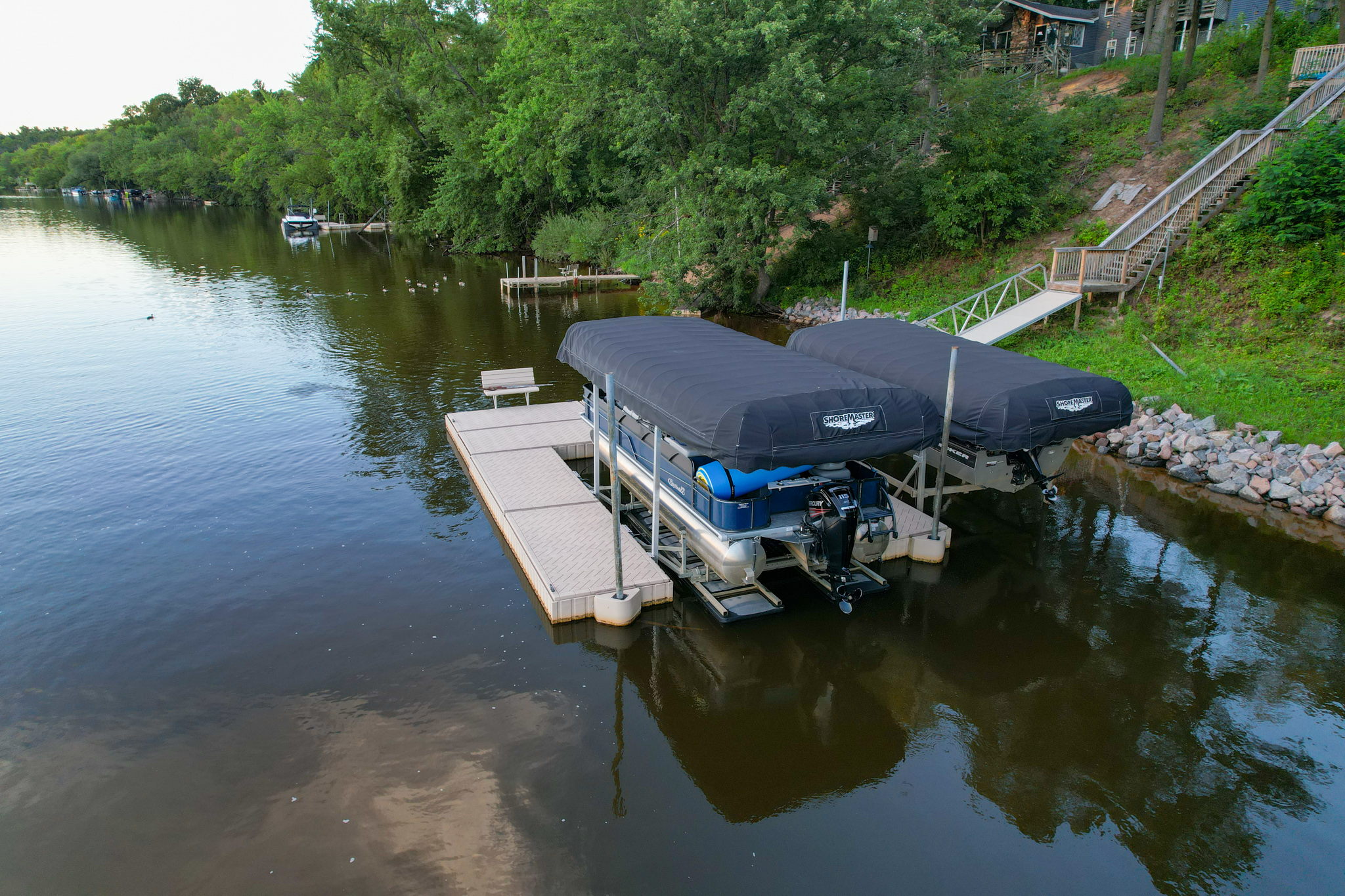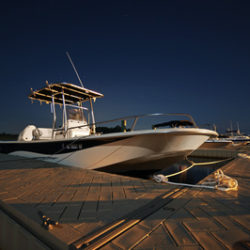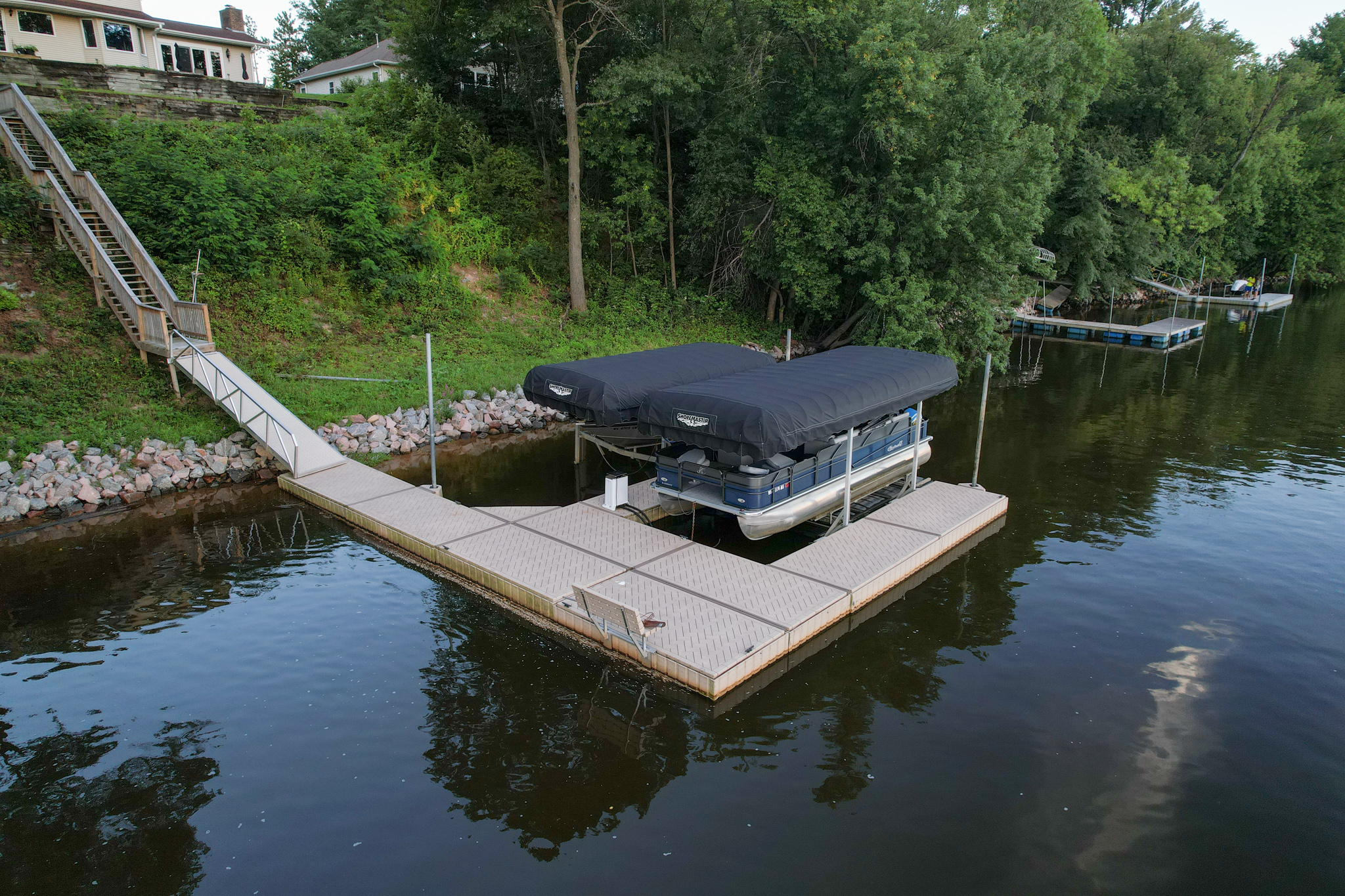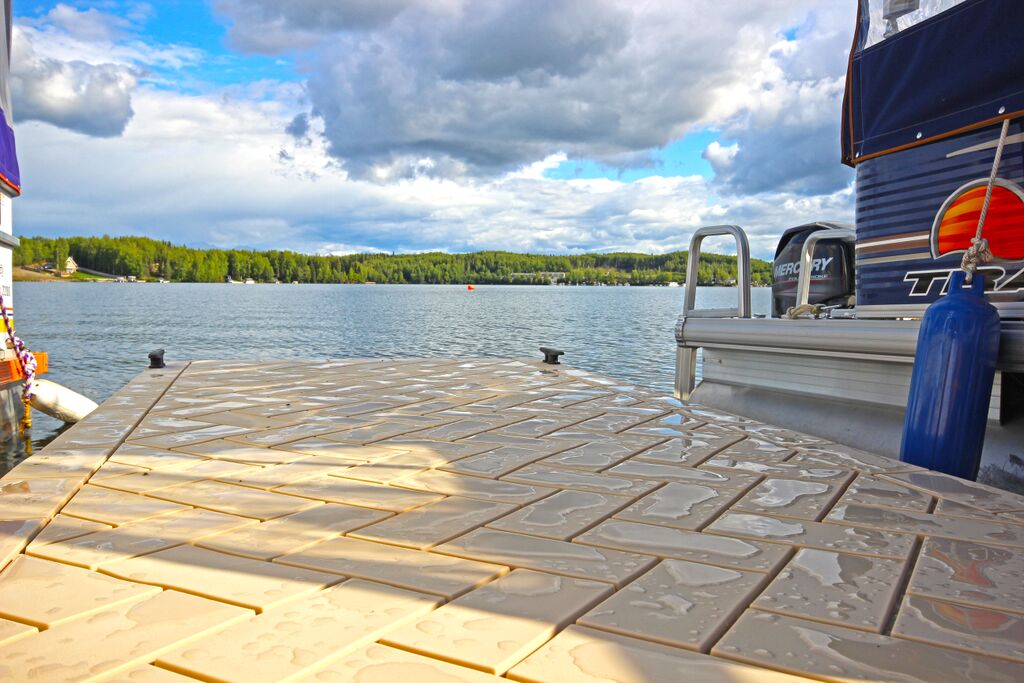Posted on June 27, 2024
How to Choose the Right Floating Boat Dock Kit for Your Lakeside Home
Written by PolyDock Products Marketing
Enchanting views, the gentle lapping of water against the shore, and the sun casting a golden hue across the lake’s surface as the day ends — these are just some of the reasons lakeside homes are coveted as such. But to truly maximize your lakeside experience, you need a versatile and reliable platform for all your waterfront activities.
Below, we delve into the distinct advantages of floating boat docks and provide a roadmap for choosing the ideal setup based on your specific lifestyle and needs.

Introduction to Floating Boat Dock Kits
Unlike traditional fixed docks, floating boat docks rest on the water’s surface, allowing them to rise and fall with fluctuating water levels. While different manufacturers use varying floatation systems, these docking solutions ensure convenient and safe access to your boat regardless of water conditions.
Moreover, floating dock kits utilize modular units in various shapes and sizes, allowing you to customize your dock system to suit your needs and shoreline characteristics. This versatility provides owners with a docking solution that can evolve with them even as their needs change.
Advantages of Floating Boat Docks
Let’s delve deeper into the benefits of choosing a floating boat dock for your lakeside home:
-
Adaptability
Seasons change. Water levels fluctuate. Unlike fixed docks, which can become submerged or inaccessible during significant water level changes, floating docks give you a docking solution you can depend on regardless of environmental conditions. According to EEK Wisconsin, some water level fluctuations are due to winds or changes in barometric pressure. These short-term fluctuations last from a few hours to several days and can be very dramatic (eek!, n.d.).
Meanwhile, the modular design of floating docks offers infinite customization options to meet various needs and preferences. Whether you require a simple platform for kayaks, an outdoor living space, or a more expansive structure with multiple boat slips, floating dock kits offer flexibility in design and configuration.
-
Ease of Installation
One of the primary advantages of floating boat docks is their straightforward installation compared to the more complex construction required by fixed docks. The best modular docking systems can be assembled with basic tools and minimal effort. PolyDock kits, for example, utilize a snap-lock or slide-in connection system, eliminating the need for advanced carpentry skills or specialized equipment. This ease of setup makes them a popular choice among DIY enthusiasts.
-
Low Maintenance
Ease of ownership is at the core of quality floating docks. In addition to easy installation and removal, which make them ideal solutions for seasonal use, quality floating dock systems use resilient materials like polyethylene and aluminum. These materials resist corrosion, degradation, and UV damage, reducing the need for frequent repairs or replacements. Usually, regular cleaning and occasional inspections are sufficient to keep these docks in top condition.
Exploring Different Types of Floating Boat Docks
Floating docks typically consist of a series of sections supported by air-tight, buoyant pontoons. These floats are usually filled with air, foam, or synthetic polymers like polystyrene to displace water and support the weight of the dock. Traditional floating docks often feature aluminum frames with separate decking materials. Aluminum docks are lightweight, strong, and corrosion-resistant, making them ideal for marine environments.
While these types of solutions provide the primary benefits of floating docks, they involve more moving parts that add to the complexity of installation and maintenance. PolyDock floating docks, on the other hand, are constructed from rotationally molded high-density polyethylene — an innovative manufacturing process representing the new age of floating docks. Here’s a closer look at what this offers:
- Fewer moving parts: Rotational molding creates a seamless, one-piece structure, significantly reducing the number of moving parts. Compared to traditional floating docks, this design minimizes the potential points of failure, leading to a more robust and reliable dock. Fewer moving parts also mean less maintenance and a lower likelihood of components wearing out over time.
- Enhanced durability: Polyethylene is known for its strength, durability, and resistance to environmental stressors. According to Roto Dynamics, “Polyethylene is a popular choice for rotational molding due to its excellent properties. It has good impact resistance, making it ideal for producing durable products suitable for outdoor use (Roto Dynamics, n.d.).
- Superior stability: The uniform construction ensures consistent thickness and buoyancy across the entire dock, while the recessed areas at the bottom of each PolyDock floating dock section enhance stability between the dock and the water surface, providing a secure and stable platform for all your waterfront activities.
PolyDock is an excellent choice for nearly any waterfront application because its modular design is made to last, is highly configurable, and is easy to add to as your needs change. Contact us today and take the first step to enhancing your waterfront experience.
Choosing the Right Floating Dock Kit for Your Needs
Choosing the perfect floating dock kit for your lakeside property involves careful consideration of several factors, including:
- Space and intended use: Assess the size and shape of your shoreline and the activities you plan to enjoy. The size of your floating dock should accommodate your needs without overwhelming your waterfront. Modular floating docks are excellent starter packs, as you can start with a simple platform and add dock accessories and sections as your waterfront lifestyle evolves.
- Dock materials: The choice of material significantly impacts the dock’s aesthetics, performance, and longevity. Rotationally molded polyethylene is ideal for those seeking a low-maintenance, durable option. If you prefer a more natural look, composite decking materials provide a good balance between aesthetics and durability.
- Environmental factors: Consider the environmental stressors your dock has to withstand. Depending on your area, this may include UV rays, rough waves, and dramatic weather and temperature changes.
Finally, establish a budget before looking for options offering the best value. Remember, while investing in a quality floating boat dock may involve higher upfront costs, it can save you maintenance and replacement costs in the long run.
Installation and Maintenance of Floating Boat Docks
Before purchasing your floating boat dock, check for any restrictions or guidelines and ensure you have all the necessary permits and approvals from local authorities. With that out of the way, here’s a general outline for assembling and installing floating docks:
- Assemble the dock sections: Plan the dock layout and follow the manufacturer’s instructions to connect the dock sections. With PolyDock, for example, this process involves pre-assembling the connector brackets. This allows you to connect floating dock sections with nothing more than a cordless drill and some wrenches.
- Float the dock into place: Carefully float the dock sections into position and connect them according to the desired layout. Adjust the connectors and brackets as needed to achieve optimal stability.
- Anchor placement: Different floating dock kits have varying anchor systems like cables or piles. Secure the dock to designated points on the shore to prevent it from drifting away.
Once your dock is installed, regular maintenance ensures you can enjoy your lakeside haven season after season. Here are some maintenance essentials:
- Regular cleaning: Wash the dock with mild soap and water to remove dirt, algae, and debris. Use a regular garden hose instead of a power washer to avoid damaging the dock surface and its anti-slip properties.
- Periodic inspection: Routinely check the dock for loose hardware, damage to floats, or signs of wear and tear. Address any issues promptly to avoid costly repairs and safety issues.
- Winterization: If you’re in an area with freezing temperatures, remove the dock and secure it in a sheltered space during winter to prevent ice damage.
Explore the PolyDock difference today and experience how our solutions elevate your lakeside lifestyle.
References:
- Environmental Education for Kids in Wisconsin (eek!) (n.d.). Three types of water level fluctuations. Retrieved from Three types of water level fluctuations | EEK Wisconsin
- Roto Dynamics (n.d.). Polyethylene in Rotational Molding: Characteristics and Types. Retrieved from Polyethylene in Rotational Molding: Characteristics and Types | Roto Dynamics




